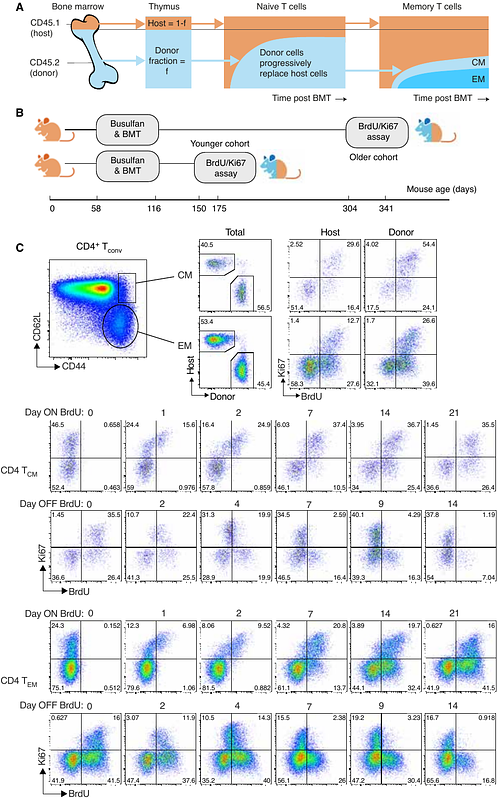Cell age, not chronological age, governs the dynamics and longevity of circulating CD4+ memory T cells

Cell age, not chronological age, governs the dynamics and longevity of circulating CD4+ memory T cells
Bullock, M. E.; Hogan, T.; Morris, S.; Nowicka, M.; van Dorp, C.; Yates, A. J.; Seddon, B.
AbstractQuantifying the kinetics with which memory T cell populations are generated and maintained is essential for identifying the determinants of the duration of immunity. The quality and persistence of circulating CD4+ effector memory (TEM) and central memory (TCM) T cells in mice appear to shift with age, but it is unclear whether these changes are driven by the aging host environment, by cell age effects, or both. Here we address these issues by combining DNA labelling methods, an established fate-mapping system, and mathematical models. Together these allow us to quantify the dynamics of both young and established circulating memory CD4+ T cell subsets, within both young and old mice. We find strong evidence that cell-age effects dominate host-age effects, and that clones become more quiescent and more persistent the longer they reside within the TCM and TEM pools. This behaviour will lead to an increasingly long-tailed distribution of clone sizes as an individual ages. Therefore, the age structure of CD4+ TCM and TEM clones can explain bulk changes in their dynamics and persistence across the lifespan.